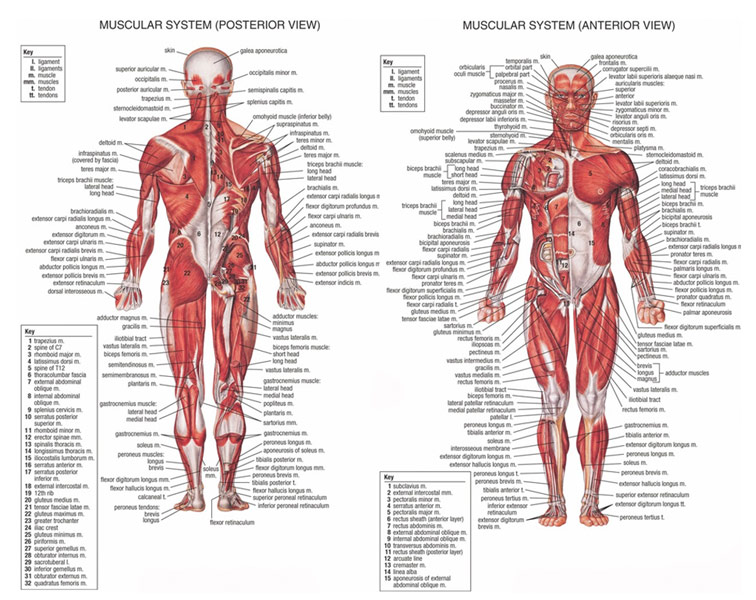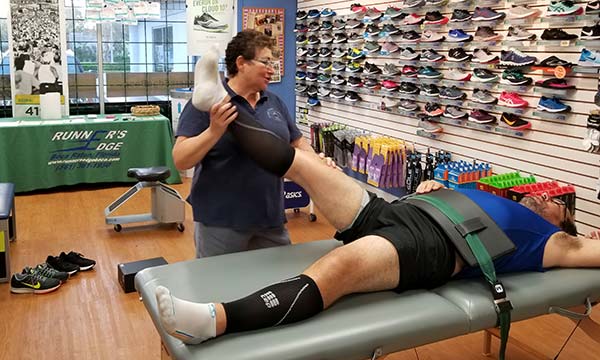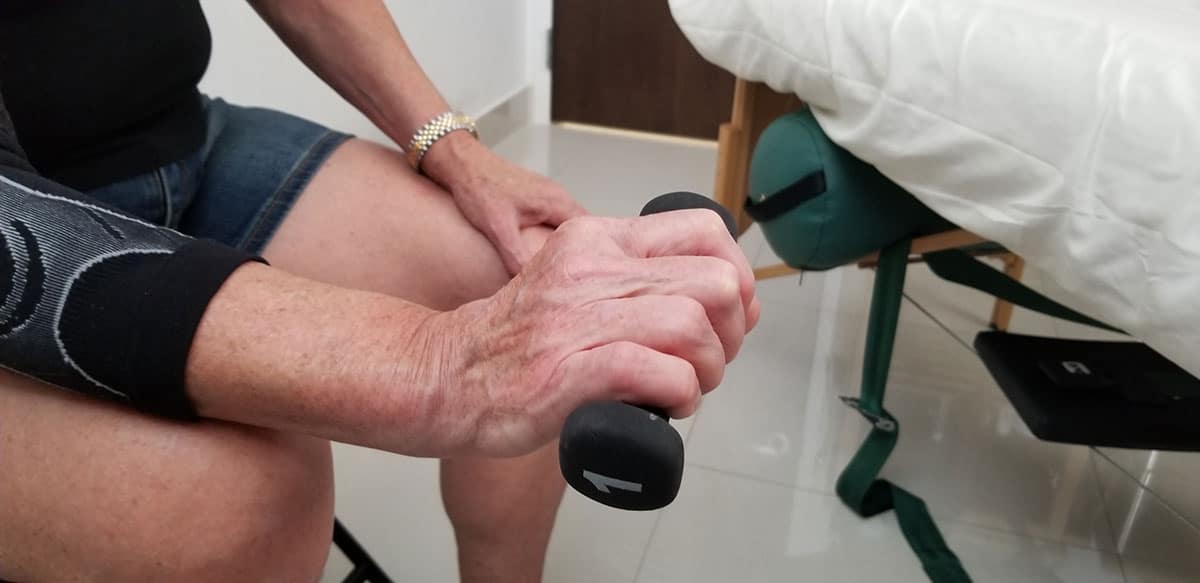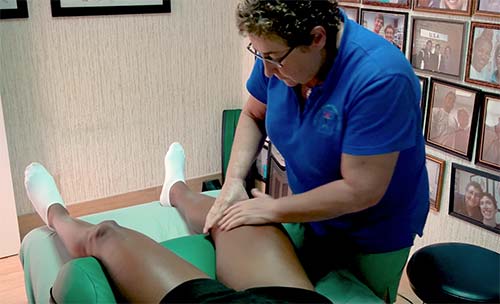Services
We Specialize in…
- Lower Hamstring Strain or Tear
- Groin / Adductor Strain
- Osgood-Schlatters Disease
- Medial Epicondylitis (Golfers Elbow)
- Lateral Epicondylitis (Tennis Elbow)
- Frozen Shoulder
- TMJ Syndrome
- ITBand Syndrome
- Tenosynovitis
- Lower Back Pain
- Piriformis Syndrome
- Plantar Fasciitis

Active Isolated Stretching (AIS)

Active Isolated Stretching (AIS) was developed by Kinesiologist Aaron Mattes to enable individuals to stretch properly without endangering the joints, muscles or connective tissues.
Active Isolated Stretching (AIS) has been incorporated into a therapeutic myofascial technique termed The Mattes Method. The Mattes Method promotes functional and physiological restoration of muscles, tendons, vertebrae, ligaments and joints facilitating healthier superficial and deep fascia planes.
The Mattes Method incorporates a key concept, which states that only relaxed myofascial structures will allow themselves to be optimally stretched. Adhering to Wolff’s and Sherrington’s Laws, The Mattes Method facilitates optimal myofascial stretching of isolated muscles without activating a protective myotatic reflex contraction. The Mattes Method utilizes a gradual stretch of no greater than 2.0 seconds promoting full range of motion and flexibility without activating antagonistic muscle group contraction.
Active Isolated Strengthening
Active Isolated Strengthening is intended to develop specific muscle support and help acquire local joint stamina. These exercises enable the performer to work and develop strength in the office, small clinic or home environment.
These exercises will assist in overcoming weakness, postural problems, local joint stamina and pain. Specificity is important for exactness of results. Resistance may be increased one pound or less, specifically accommodating the ability of the participant.
Resistance upward during the shortening movement is called “concentric contraction” or positive resistance. Movement lengthening the muscle downward to the starting position is called “eccentric contraction” or negative resistance. Both concentric and eccentric contractions should be performed slowly with exactness of technique. A good rule of thumb is 2-3 seconds for each repetition during the concentric contraction and 4-5 seconds for each repetition during the eccentric contraction.
Active Isolated Strength training should precede functional strength training.

Massage Services

Sports Massage
A contemporary western massage which addresses the specific needs of athletes, during training, or before or after events, to enhance performance or promote healing post injury.
Deep Tissue Massage
A massage technique in which fingers, thumbs and elbows are used to release chronic muscle tension, using slow deep strokes and friction. The therapist may work perpendicular to the fibers of the superficial muscles, with the intent to massage muscles lying underneath. The therapy borrows from other bodywork including cross fiber friction massage, deep tissue sculpting, rolfing and others. It is believed to increase blood flow and to be of greatest use in problem muscles for pain, rehabilitation and arthritic complaints.
Therapeutic Massage
The therapeutic manipulation of body tissue by a trained practitioner, by systemic stroking, kneading or application of pressure, to effect a beneficial physiological response such as pain reduction, improved circulation or muscle relaxation.
Graston Technique
What is the Graston Technique?
Graston Technique is a patented form of manual therapy that uses stainless steel tools to perform muscle mobilizations. It is a form of soft tissue mobilization used by trained clinicians.
How does it work?
Graston Technique is a deeper, more intense version of manual therapy. Specially trained clinicians use specifically designed Graston tools in two ways. First, to locate muscle knots or restrictions. They do this by running the tools over your skin to feel for fibrous or scar tissue that may be causing you pain or restricting your movement. Second, they use the tools to break up that tissue to restore mobility and function. Below is a video of the Graston Technique being used to treat Plantar Fasciitis on a patient.
Sports Taping
How Does RockTape Work?
When applied correctly, RockTape’s unique elasticity causes the skin to form convolutions and wrinkle. This decompresses the tissue immediately below the skin.
It is believed that this has three main effects:
- Fluid effect- improving blood and lymphatic flow in the taped area
- Mechanical effect- improving the slide and glide between tissue layers
- Neurological effect- altering the perception of pain and improving body awareness.
Ultrasound Therapy
How does Ultrasound work?
Ultrasonic waves or sound waves of a high frequency that is not audible to the human ear are produced by means of mechanical vibration in the metal treatment head of the ultrasound machine. The treatment head is then moved over the surface of the skin in the region of the injury transmitting the energy into the tissues.
When sound waves come into contact with air it causes a dissipation of the waves, and so a special ultrasound gel is placed on the skin to ensure maximal contact between the treatment head and the surface of the skin and to provide a medium through with the sound waves can travel. Ultrasound can also be applied under water which is also a medium for ultrasound waves to travel through.
Application of Ultrasound:
Ultrasound is normally applied by use of a small metal treatment head which emits the ultrasonic beam. This is moved continuously over the skin for approximately 3-5 mins. Treatments may be repeated 1-2 times daily in more acute injuries and less frequently in chronic cases.
Ultrasound dosage can be varied either in intensity or frequency of the ultrasound beam. Simply speaking lower frequency application provides a greater depth of penetration and so is used in cases where the injured tissue is suspected to be deeply situated. Conversely, higher frequency doses are used for structures that are closer to the surface of skin.
Contraindications of Ultrasound
As ultrasound is thought to affect the tissue repair process and so it is also highly possible that it may affect diseased tissue tissue in an abnormal fashion. In addition the proposed increase in blood may also function in spreading malignancies around the body. Therefore a number of contraindications should be followed when using therapeutic ultrasound:
Do not use if the patient suffers from:
- Acute infections
- Risk of haemorrhage
- Severely ischeamic tissue
- Recent history if venous thrombosis
- Exposed neural tissue
- Suspicion of a bone fracture
- If the patient is pregnant
- Do not use in the region of the gonads (sex organs), the active bone growth plates of children, or the eye.
